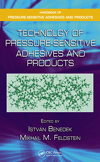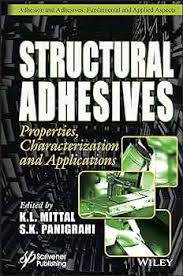Understanding Pressure-Sensitive Adhesives for Graphics Applications
Selecting the optimal pressure-sensitive adhesive for each of the many different—and new—applications across the graphics market is key to helping ensure the end products’ success.

Pressure-sensitive graphic products are ubiquitous in today’s world. They are used for outdoor advertising, in-store point-of-purchase promotions, vehicle graphics, and the traffic and safety markings (including fluorescent/reflective films) along the roads those vehicles travel. More recently, they have emerged as architectural graphics such as external color facings. It was only a matter of time before they found their way into home décor as interior wall coverings and graphics on furniture.
In short, the graphics market is as diverse as it is dynamic. It continues to grow and evolve, requiring adhesive manufacturers to constantly innovate solutions for new materials (e.g., semi-flexible olefin films) and surfaces.
The Role of Adhesives
Pressure-sensitive graphic products are films and sheets made from plastics, polymers, textiles, and paper. Pressure-sensitive adhesives (PSAs) are a key component of graphic films. The challenge is in selecting the optimal PSA for each of the many different—and new—applications across the graphics market.
PSAs for graphic films generally fall into a range of four adhesion types: ultra-removable, removable, permanent, and high tack. The specific application informs the type of adhesive required, but it is important to consider additional performance characteristics when selecting the right PSA for graphics films. The converter typically evaluates attributes such as: peel retention, initial tack, clean removability, shrink resistance, water resistance, optical clarity, and resistance to plasticizer migration. The product’s life span and environmental conditions are also considerations.
Adhesive manufacturers often modify PSAs to the requirements of a specific application. Product attributes are formulated, or “tweaked,” for optimal tack, adhesion, peel retention, water resistance, and other properties. Manufacturers that develop their own polymers in-house are well-positioned to help customers achieve the optimum adhesive formulation for a given application.
Although the base chemistry of PSAs can be rubber or silicone, a combination of acrylic monomers and other compounds is typically used for graphic films. Generally speaking, these PSAs have superior performance features and are easily modified. Depending on the adhesion type, a range of attributes should be considered when selecting water-based acrylic PSA formulations for coating to graphic films.
Ultra-Removable PSAs
Fully repositionable adhesives can be moved and reapplied over and over, without loss of initial tack. Advanced microsphere technology provides clean removability from most surfaces. Microspheres are tiny particles measuring between 10-250 microns in diameter. Although microscopic, they are larger than the particles found in typical emulsion PSAs. The larger size forms a discontinuous adhesive film with a low glass transition temperature (Tg) of -70°C.
Peel value indicates the strength of adherence to the surface; low peel (e.g., 0.1-0.3 lbs) is desirable. These adhesives are especially well-suited for paper-based applications, where emulsion technology can often lead to tear. This is a key attribute for demanding repositionable applications.
Removable PSAs
Products in this category offer varied adhesion levels to meet the diverse needs for removable graphic films. Low-adhesion PSAs feature clean removability from a variety of surfaces. Plasticizer-resistant formulations improve removability by enabling the adhesive to withstand softening effects, which could compromise performance.

Window stickers require a removable PSA that offers good wing resistance to keep graphics from curling when applied.
Low-adhesion products can also be UV- and moisture-resistant, rendering them resilient against yellowing and water damage. These are critical features to consider for clarity and for outdoor application where weather exposure is expected. They offer excellent shear with a good balance of peel and tack adhesion.
PSAs produced as mid-adhesion removable products can be developed as removable or permanent adhesives with an ultra-clear film. They can be compliant to direct skin contact (16 CFR 1500.3 (C)(4)) and indirect food contact (FDA 21 CFR 175.105) requirements. Other PSA formulations can be developed for repositionable (like the ultra-removable products) or semi-removable applications. These are ideal for use on vinyl film and can also be FDA approved for indirect food contact.
Removable PSAs that offer higher initial tack and good wing-up resistance help ensure that graphics will not curl when removed from the release liner and applied to the surface. They are suitable for rougher or lower-surface-energy substrates, such as painted drywall or polished floors, where adhesion is more difficult to achieve. Additional benefits can include clean removability with no ghosting or residue upon removal, as well as resilience in high temperatures and humid environments. These PSAs can also be free of alkyl phenol ethoxylates (APEs) and compliant with REACH.
Permanent PSAs
Permanent PSAs offer high adhesion to surfaces. As a result, these products are better suited for longer service life graphics where high performance is demanded. From decorative films for offices and conference rooms to architectural signage and decals, these products offer higher adhesion with excellent shrink resistance for high-quality graphic products.

A permanent PSA that withstands environmental conditions and offers a longer life span is ideal for this outdoor sign.
One permanent formulation is a crosslinked PSA that offers a superior balance of peel and shear values, indicating good bond strength and cohesion (internal strength of the adhesive). It is plasticizer resistant and FDA approved for indirect food contact.
A sister formulation, also crosslinked for high cohesion, offers strong water and blush resistance, as well as high-performance shear. It is tackified for low-surface-energy (LSE) surfaces specifically and is best used for opaque films where clarity isn’t critical. It is also FDA approved for indirect food contact and is direct skin compliant and direct skin and oral toxicity compliant (16 CFR 1500.3 (C) (2)(i)).
High-Tack PSAs
High-tack PSAs are the solution for adhering film to difficult-to-bond, low-energy surfaces in applications that demand maximum durability. High-performing water-based PSAs are recommended for the most rugged environmental conditions.
Key properties include strong thumb appeal (initial tack) and an excellent balance of peel and shear values, which indicates excellent bond strength and cohesion. These PSAs work well on many surfaces, especially those with LSE, and can be BS5609 compliant for the durable goods market as well.
Collaboration is Key
It is important for converters and adhesives manufacturers to partner together, working closely to both identify and then modify the optimum adhesive for a given application. The process involves testing under real-life conditions to ensure the optimal results: an adhesive that fully meets the application requirements based on how permanent the application needs be, expected life span, and environmental conditions.
For more information, visit www.franklinadhesivesandpolymers.com.
Note: All images courtesy of Franklin International.
Looking for a reprint of this article?
From high-res PDFs to custom plaques, order your copy today!









